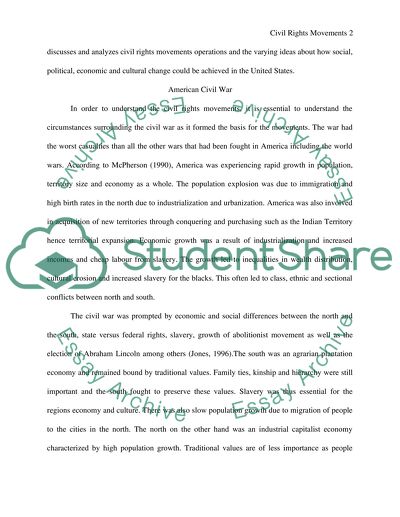Cite this document
(“Civil Rights Movements Essay Example | Topics and Well Written Essays - 2000 words”, n.d.)
Retrieved from https://studentshare.org/history/1405521-3-analyse-the-view-that-civil-rights-movements-operated-on-several-different-levels-and-attracted-supporters-with-varying-ideas
Retrieved from https://studentshare.org/history/1405521-3-analyse-the-view-that-civil-rights-movements-operated-on-several-different-levels-and-attracted-supporters-with-varying-ideas
(Civil Rights Movements Essay Example | Topics and Well Written Essays - 2000 Words)
https://studentshare.org/history/1405521-3-analyse-the-view-that-civil-rights-movements-operated-on-several-different-levels-and-attracted-supporters-with-varying-ideas.
https://studentshare.org/history/1405521-3-analyse-the-view-that-civil-rights-movements-operated-on-several-different-levels-and-attracted-supporters-with-varying-ideas.
“Civil Rights Movements Essay Example | Topics and Well Written Essays - 2000 Words”, n.d. https://studentshare.org/history/1405521-3-analyse-the-view-that-civil-rights-movements-operated-on-several-different-levels-and-attracted-supporters-with-varying-ideas.


